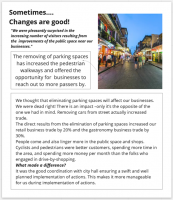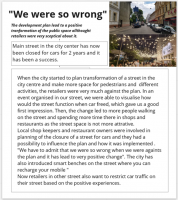
In May 2022, Space4People met to discuss how to promote our Integrated Action Plans (IAPs) to key stakeholders to strengthen ownership amongst stakeholders, assure adoption by political players and foster a smooth transition to its implementation phase. Questions focused on what measure are fitting for which stakeholder group, who are potential troublemakers and how to convince them to back the actions and ideas of our IAPs?
Our meeting centred around the “implementability” of our IAPs. This means getting governance structures ready for the kick-start of implementation. And preparing a wide acceptance of the final product of planning to ease implementation and secure acceptance of the IAP and its measures among stakeholders.
Implementation challenges were subject to the work of the entire first day starting with identifying the top challenges we see at local level: a lack of political support, opposition by stakeholders to the IAP’s actions and resourcing for the delivery of the actions. Amongst many ideas to address these challenges, 3 were present as options for each of them: to use data as evidence to convince stakeholders and political players, to continue applying pilots to showcase the benefits of the actions and to integrate decision makers and stakeholders in the implementation process for a better understanding and a direct influence on the measures’ realisation.
Certainly, all three challenges and main ideas are connected to a good communication strategy starting with the promotion of our 2-year work’s result: the final IAPs. What better to start with than to see what communication and participation measure fits to which stakeholder group for this? Backed by an adapted stakeholder analysis matrix using the dimensions of importance for approval and implementation as well as level of interactivity for promotional measures, 3 main “stakeholder group – promotion activity” couples got identified:
- To address political decision makers with more static measures like official presentations, visualisations, executive brochures, and adoption ceremonies
- To address retailers, gastronomy, businesses with interactive and integrative measures like community councils, pilot activities and participatory projects
- To address citizens and residents as well with interactive and integrative measures like street stalls, citizen projects and exhibitions
But how can these activities look in detail to get to the objective of ownership, acceptance, and adoption of the IAPs? We decided to take a look into the future and employed our own version of the “Newspaper of tomorrow” tool for this. Split up in smaller groups, each agreed on a stakeholder group to address, think on the challenges we might meet with this one, ideate promotional activities to use for counteracting these and finally create an article on how all of this worked out successfully.
Two of our groups focused on retailers and gastronomy as a potential driver to oppose restrictive measures to access by car in their shop’s streets. The main elements how they got convinced to back the measure were
- a visualisation event to showcase possible change scenarios,
- influence on the design changes to the street,
- the use of pilots to allow retail and gastronomy to make their own experiences,
- a well working coordination with administration safeguarding a quick and cooperative implementation without much impact on their business.

A third group selected the target group of pupils and parents as key actors in working for a modal shift from car-based to sustainable school trips. The main elements how to get specifically parents backing the plan used an approach addressing them through their children by e. g.
- school yard design activities with pupils following a tactical urbanism approach
- festivals and games directed to test walking, cycling or PT use to school
- guidance and argumentation on the benefits of a safe and healthy school trip
The results of the work exercise are now used to elaborate promotional activities for the set objectives and planned measures in our efforts to finalise our IAPs!


